Contents
Introduction
In most cases, hackers "case out" their targets before attacking. They do this by collecting information about the system and internal network, which gives an idea of how they can profit from an attack and helps to plan further actions. Of course, the attackers need to be sure they have accessed a real workstation on a company's infrastructure, and not a mere sandbox—a virtual environment designed to analyze the behavior of executable files. That is why modern malware has capabilities for detecting and evading protection mechanisms, as well as for hiding malicious functionality if run in a sandbox or code analyzer.
We have analyzed 36 malware families used by at least 23 APT groups around the world during the period from 2010 through the first half of 2020. The selection was made based on MITRE data and information about new malware samples analyzed by the PT Expert Security Center.
In this research, we will show how sandbox evasion techniques have evolved in the last 10 years.
Sandboxes run a file in an isolated virtual environment, analyze the actions performed by the file, and issue a verdict that answers the all-important question: is the file safe or not? Sandboxes can be agent-based or agentless.
| Agent-based sandboxes | The virtual machine has a built-in agent (special process) that manages the system, in addition to getting and passing events and artifacts of interest. When a new process is generated, the sandbox intercepts API function calls (changes to an address in process memory or changes to code in a function body). This approach has one significant drawback: the sandbox needs to conceal and protect agent-related objects from malware. |
| Agentless sandboxes |
These sandboxes use second level address translation (SLAT), a form of hardware-assisted virtualization built into CPUs. AMD processors support SLAT through Rapid Virtualization Indexing (RVI), while Intel's implementation is known as Extended Page Table (EPT). Extended page tables are nested between the guest physical memory and the host virtual memory. This allows to do the following:
All these actions are observed from outside the sandbox: malware cannot detect that it is being watched. |
Executive summary
Sandbox evasion and anti-analysis techniques are found most frequently in remote access tools (accounting for 56% of the malware in our dataset) and loaders (14%). These types of malware are used to perform reconnaissance and gather information about the target system. If attackers spot that their malware is running inside a virtual environment, they will not continue their attack and will not download the payload. Instead, they will attempt to maintain stealth by terminating execution of the malware.
69 percent of the malware samples in our dataset were used for cyberespionage. Such attacks require staying invisible on a victim's system for extended periods, which is why attackers look for ways to maintain long-term, stealthy persistence.
To detect virtual machines (sandboxes), attackers send WMI queries (25% of malware in the dataset), perform other environment checks (33%), or check which processes are running (19%). Attackers can also use information about the virtualization environment to plan their future efforts.
It is getting more and more difficult to perform static analysis of malicious files by matching suspicious files with known signatures and hash sums, because malware authors are using code obfuscation to impede analysis attempts. That is why we recommend analyzing file behavior in a sandbox.
Evolution of anti-sandbox techniques
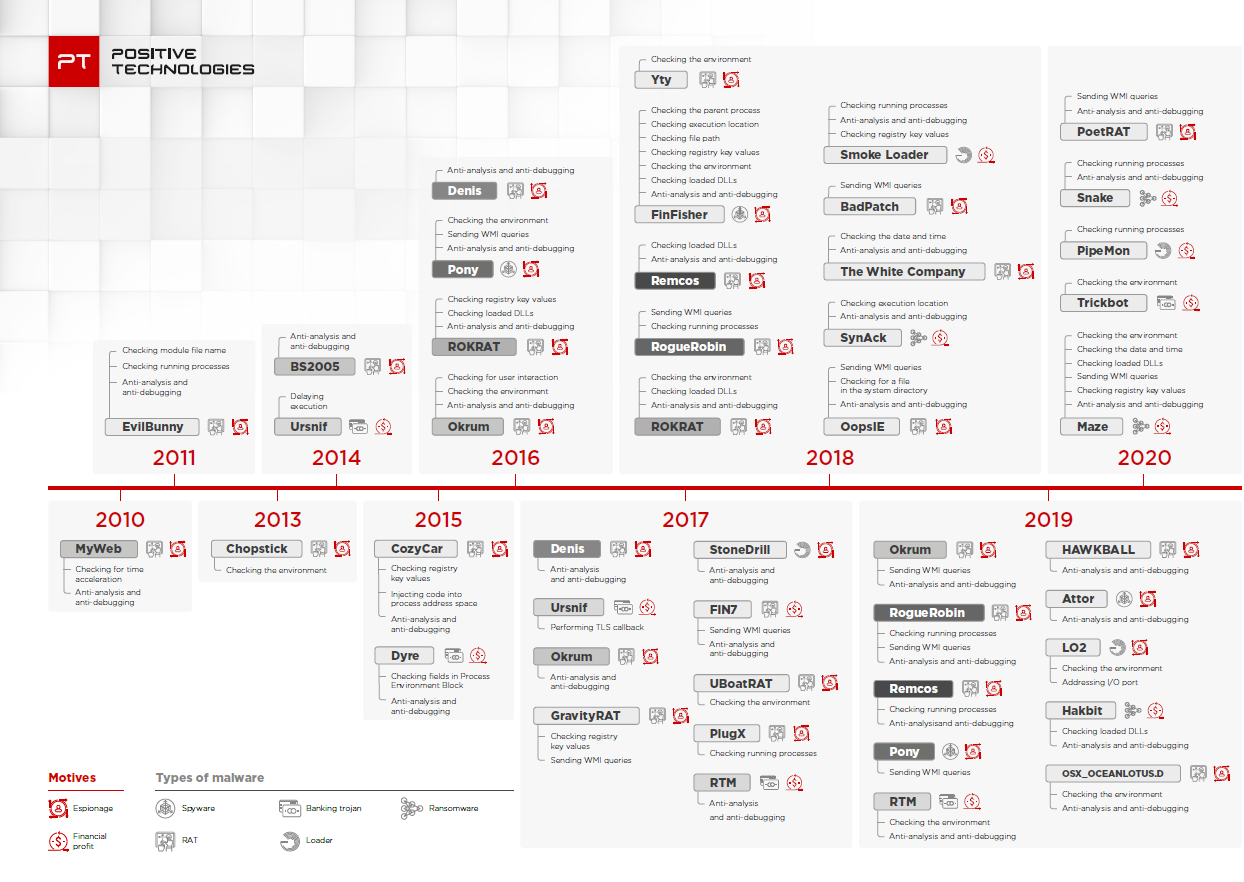
To evade sandboxes and analysis tools, the same malware may use different methods in different years. Threat actors also try to combine multiple methods. If one method does not work and is intercepted by the sandbox, the malware can still use other signs to determine whether it is running in a virtual environment and, if so, terminate itself in time to avoid discovery.
APT group Ke3chang (also known as APT15) used the MyWeb backdoor in 2010, BS2005in 2014, and Okrum in 2016–2019. They used a number of methods for evading and detecting virtual machines and code analyzers. They checked for human interaction by waiting for three left clicks or locating the cursor position, and determined the amount of physical memory by calling GetGlobalMemoryStatusEx or by sending WMI queries.
Here are several more examples:
ROKRAT
Type: RAT
Group: APT37, active since 2012
Target: organizations in South Korea
Infection vector: phishing (phishing emails with malicious HWP attachments exploiting vulnerability CVE-2013-0808)
Motive:espionage
| Sandbox evasion and anti-analysis methods used | 2016 | 2018 |
|---|---|---|
| Checking whether the SbieDll.dll, Dbghelp.dll, Api_log.dll, or Dir_watch.dll libraries are loaded | + |
+ |
| Obtaining the value of the SystemBiosVersion key of the HARDWARE\DESCRIPTION\System registry branch | + |
- |
| Using the NOP (No Operation) instruction as padding in self-modifying code to protect from debuggers | + |
- |
| Calling the IsDebuggerPresent function to detect debugging | - |
+ |
| Calling the GetTickCount function twice to check for step-through execution | - |
+ |
| Checking for the file C:\Program Files\VMware\VMware Tools\vmtoolsd.exe | - |
+ |
RogueRobin
Type: RAT
Group: DarkHydrus, active since 2016
Target: government agencies and educational institutions in the Middle East
Infection vector: phishing (malicious Microsoft Office documents distributed via Google Drive)
Motive: espionage
| Sandbox evasion and anti-analysis methods used | 2018 | 2019 |
|---|---|---|
| Sending WMI queries to get the BIOS version and manufacturer | + |
+ |
| Sending WMI queries to check the number of CPU cores; the value must exceed 1 | + |
+ |
| Sending WMI queries to check the amount of physical memory; the value must be at least 2,900,000,000 bytes | + |
+ |
| Checking the number of running processes for Wireshark and Sysinternals | + |
+ |
| Obfuscating a PowerShell script with Invoke-Obfuscation | + |
+ |
| Checking for debuggers in each DNS request | - |
+ |
Remcos
Type: RAT
Group: Gorgon Group, active since 2018
Target: government organizations in Russia, the United Kingdom, Spain, and the United States
Infection vector: phishing (emails with malicious Microsoft Word documents exploiting vulnerability CVE-2017-0199)
Motive: espionage
| Sandbox evasion and anti-analysis methods used | 2018 | 2019 |
|---|---|---|
| Checking for obsolete SbieDll.dll system artifact | + |
- |
| Encrypting source code with RC4 and Base64 algorithms | + |
+ |
| Checking active processes for vmtoolsd.exe and vbox.exe | - |
+ |
| Calling the IsDebuggerPresent function to check whether the process that calls the function is being run in a debugger context | - |
+ |
In 2018–2019, the number of malware families using sandbox evasion techniques increased. However, this statistic is likely explained by the fact that experts now investigate malware samples more often.
Attackers who sell malware on the darkweb also offer functionality for detecting and evading sandboxes and antivirus tools, as well as for countering analysis and debugging. The starting price for malware with built-in sandbox evasion is $30. Additional protection from detection by sandboxes and antivirus solutions costs $20.
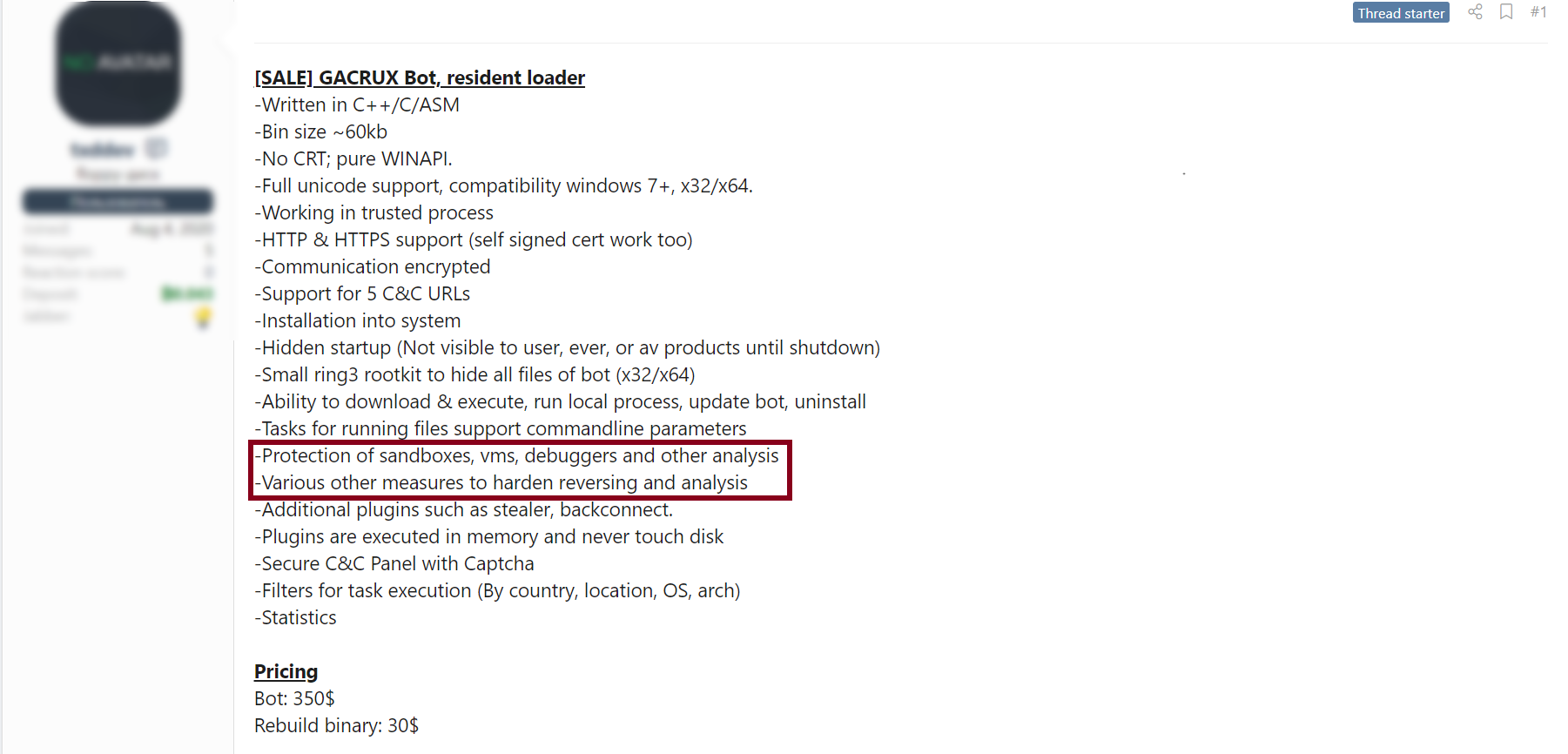
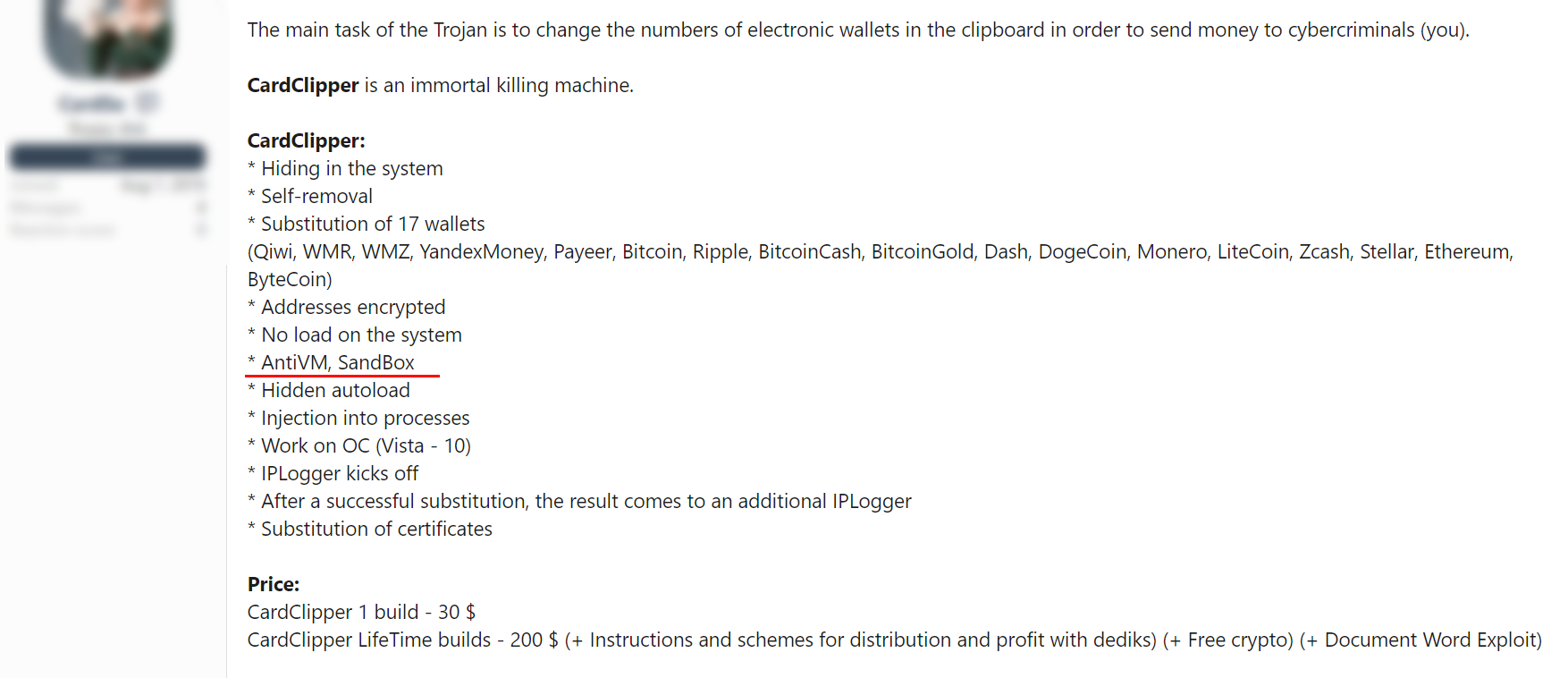

Popular virtualization evasion techniques
Checking running processes
Used in EvilBunny, FinFisher, PlugX, Remcos, RogueRobin, Smoke Loader, PipeMon, Snake
One fifth of malware analyzes the list of running processes to detect a virtual environment. For example:
- The EvilBunny RAT continues execution only if at least 15 processes are running.
- PlugX (a backdoor widely used by APT groups over the last 10 years) checks if VMware Tools are running in background by searching for processes named "vmtoolsd".
- Remcos, used by Gorgon Group in phishing attacks against governments, searches for "vmtoolsd" and "vbox.exe" in the list of active processes.
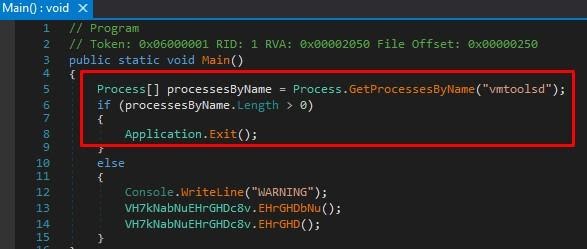
WMI queries
Used in BadPatch, Fin7, GravityRAT, OopsIE, Pony, RogueRobin
Since 2016, malware developers have been actively using WMI queries Windows Management Instrumentation (WMI) is a technology for centralized management of Windows-based infrastructures. to access devices, accounts, services, processes, network interfaces, and other programs. Of the malware in question, 25 percent makes use of them. In most cases, the attackers are trying to find out the model of hard drive or motherboard, as well as OS and BIOS versions.
GravityRAT uses an interesting method to detect virtual environments. By sending the SELECT * FROM MSAcpi_ThermalZoneTemperature WMI query, it checks the CPU temperature: if the malware is being run on a physical machine, the temperature value will be returned. But if the system responds with "ERROR" or "Not Supported," this means that the malware is running in a virtual environment.


WMI queries have also been used by the OilRig group (APT34, Helix Kitten), which for more than five years has targeted a variety of industries, including government, finance, energy, and telecommunications, primarily in the Middle East. The group's backdoor OopsIE sends the WMI query SELECT * FROM Win32_Fan to check the state of the CPU fan. This query should return a class that provides statistics on the CPU fan. The backdoor checks whether the response is empty, which would indicate a virtual environment.
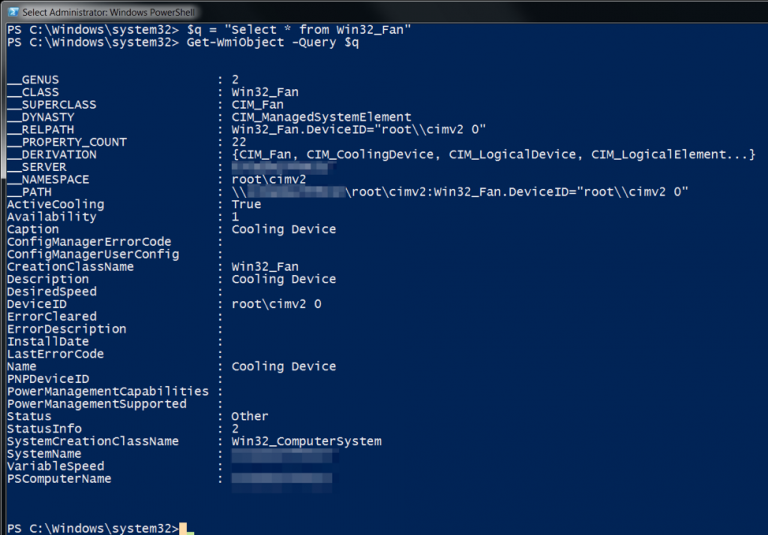

Registry key values checks
Used in CozyCar, Smoke Loader, FinFisher, GravityRAT, ROKRAT
Some malware (14 percent) reads registry key values and looks for substrings in them that suggest a virtual machine. For example:
- The Smoke Loaderbanking trojan, used by TA505, checks registry key values in System\CurrentControlSet\Enum\IDE and System\CurrentControlSet\Enum\SCSI to search for substrings that match QEMU, VirtualBox, VMware, or Xen virtualization products. Smoke Loader (Smoke Bot) is offered for sale on the darkweb. The complete malware package costs $1,650.
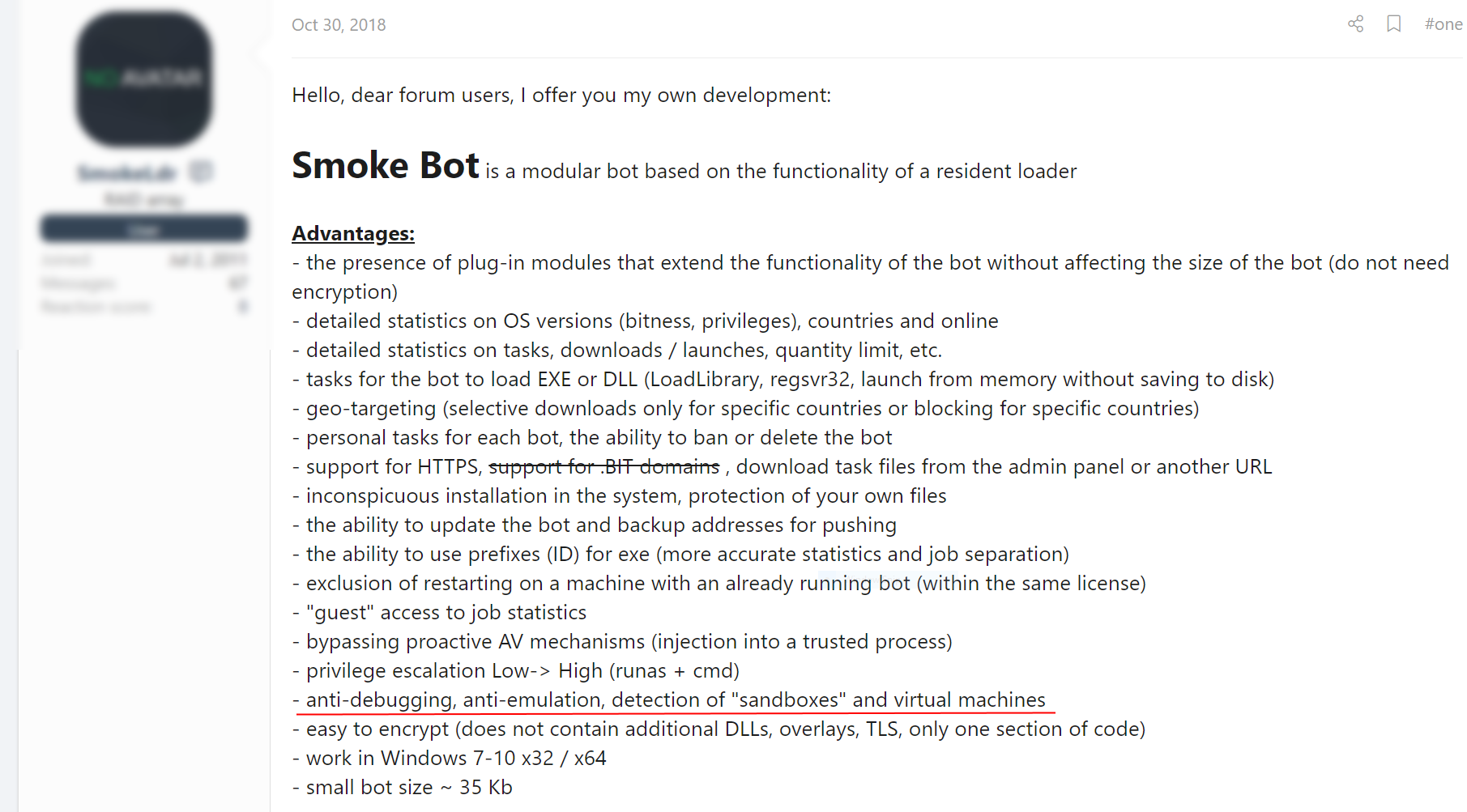
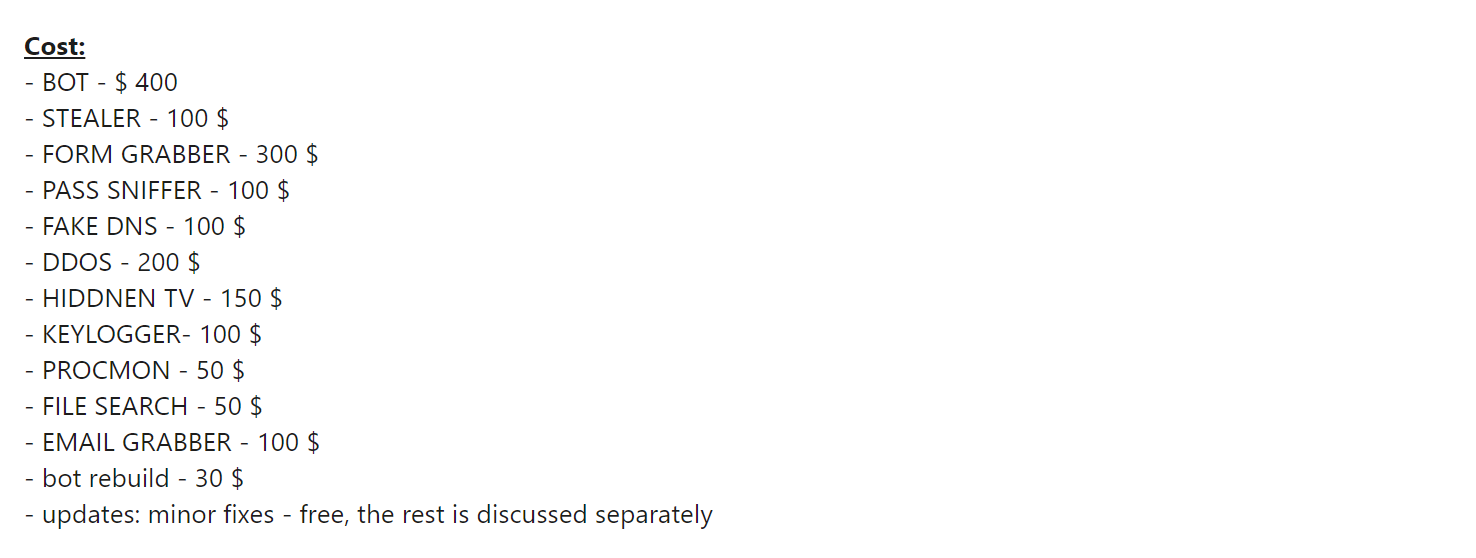
- FinFisher verifies that HKLM\SOFTWARE\Microsoft\Cryptography\MachineGuid does not equal "6ba1d002-21ed-4dbe-afb5-08cf8b81ca32"; HKLM\SOFTWARE\Microsoft\Windows NT\CurrentVersion\DigitalProductId does not equal "55274-649-6478953-23109", "A22-00001", or "47220", and that HARDWARE\Description\System\SystemBiosDate does not contain "01/02/03".
- CozyCar used by APT29, checks the registry key values in SOFTWARE\Microsoft\Windows\CurrentVersion\Uninstall for security products to avoid.
Other environment checks
In addition to checking running processes, registry key values, and sending WMI queries, malefactors can check the environment in other ways. For example, the RTM (Redaman) banking trojan checks for the following files and directories on C:\ and D:\ drives:- cuckoo,
- fake_drive,
- perl,
- strawberry,
- targets.xls,
- tsl,
- wget.exe,
- *python*.
The existence of any of these files or directories indicates that the malware is running in a sandbox or a code analyzer.
APT37 (also known as ScarCruft, Group123, and TEMP.Reaper) has modified its ROKRAT backdoor over the last several years. In addition to checking registry key values, this malware also checks whether the file C:\Program Files\VMware\VMware Tools\vmtoolsd.exe exists and whether the following code analyzer and debugger DLLs have been loaded:
- SbieDll.dll,
- Dbghelp.dll,
- Api_log.dll,
- Dir_watch.dll.
Correctly configuring virtual machines is enough to stop the following attacker technique. PoetRAT, remote access malware, used in targeted attacks against ICS and SCADA systems in the energy sector, checks the hard disk size to determine whether it is running in a sandbox environment. Since the malware assumes that sandboxes have hard drives of less than 62 GB, it can be tricked by allocating more space for the virtual machine.
Does a sandbox have to detect all evasion techniques
Not all sandbox evasion methods are easy to detect. Some checks—such as file path, MAC address, date and time, and operation execution time—strongly resemble legitimate actions. Detection may generate a large number of false positives and interfere with proper functioning of other programs. This, however, does not mean that malware will remain totally invisible. Sandboxes do not have to catch each and every evasion technique, since malware has many other attributes that can be detected at other stages of operation. That said, the more techniques the sandbox sees, the greater the chances of detecting new malware samples and applying this information to counter cyberthreats.
Anti-analysis and anti-debugging
To slip past antivirus programs for as long as possible, malefactors try to prevent analysis of malware by security professionals. They do so by using code obfuscation and anti-debugging techniques.
In 2019, the Remcos RAT added an anti-debugging method to its arsenal. If the loader detects a debugger in the system after calling the IsDebuggerPresent function, it displays the message "This is a third-party compiled AutoIt script" and terminates execution.
The authors of FinFisher spyware went to great effort to obfuscate malicious code and impede analysis. For example, opcode 0x1A should represent a JB (Jump if below) function, but is implemented through a set carry (STC) instruction followed by a JMP to the dispatcher code which will verify the carry flag condition set by STC.

To check for the step-through execution normally used by debuggers, EvilBunny calls NtQuerySystemTime, GetSystemTimeAsFileTime, and GetTickCount. It calls each function twice to calculate a delta and performs a sleep operation between the first and second calls. If any of the three deltas is below 998 milliseconds, execution will terminate.
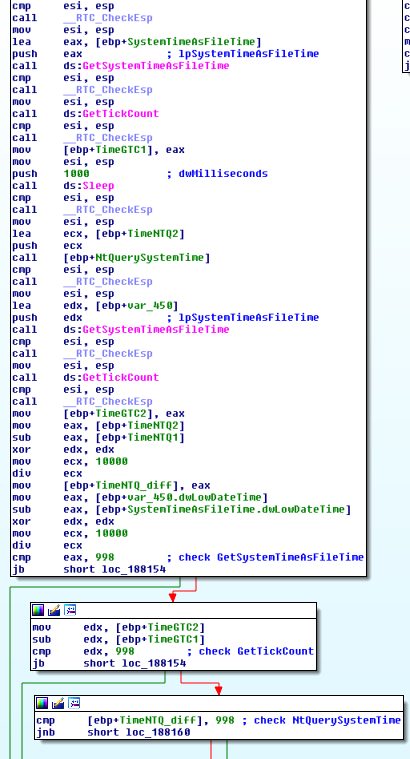
It is getting more and more difficult to perform static analysis of malware and identify attributes of malicious files by matching them with signatures and hash sums. That is why, in addition to static analysis, we recommend running suspicious files in a virtual environment to analyze their behavior.
Conclusion
Attackers constantly modify their malware to evade detection for as long as possible. In this respect, APT groups do especially well. To collect information about the victim's infrastructure, attackers prefer using malware with built-in functionality for detecting and evading virtual machines and code analyzers. In addition, loaders and remote access tools sold on the darkweb have built-in basic sandbox evasion functions, or at least this is what their sellers claim.
In recent years, malware authors have been trying especially hard to evade code analyzers. Hackers do all they can to hide malicious functionality from security researchers and minimize the likelihood of detection of malware based on known indicators of compromise. Traditional defenses may not be able to detect malicious programs. To detect modern malware, we recommend analyzing file behavior in a secure virtual environment. By using a sandbox, you also enrich your IOC database and can leverage this information to better respond to cyberthreats. By updating all your protection tools with the latest IOCs, you can detect even new malware versions if hackers attempt a second attack on your infrastructure. For example, if attackers compile a new malware version but forget to change the command and control (C2) address, the newer malware will still be detected because of the identical address.
Sandboxes have already learned to thwart the majority of popular evasion techniques. Even if hackers use methods that resemble legitimate processes, such as checking the current date and time, malware will most likely reveal itself by other signs a sandbox will be able to detect. Hackers constantly refine their tools, change sandbox detection techniques, and use multiple techniques at the same time. In parallel, sandboxes must be flexible enough and easily adapt to new challenges by imitating a real workstation. A sandbox must hide its presence well in order to prevent malware from terminating early and successfully collect indicators of compromise.
